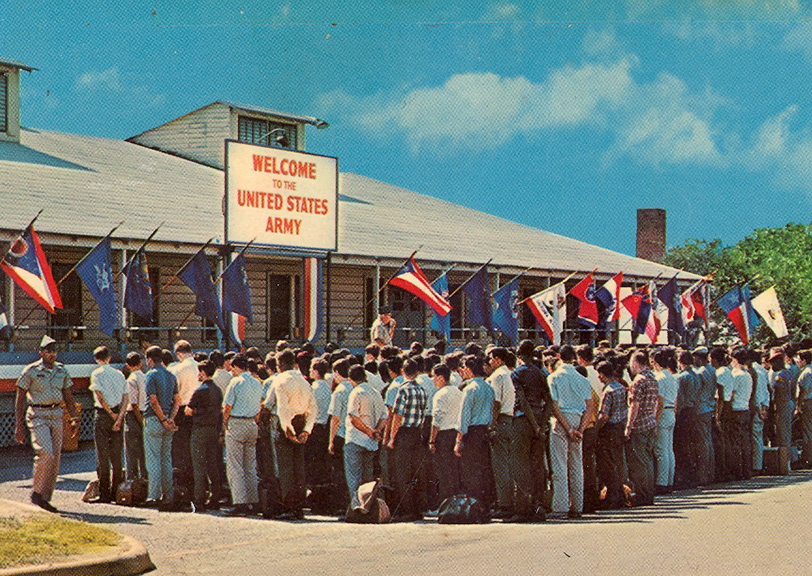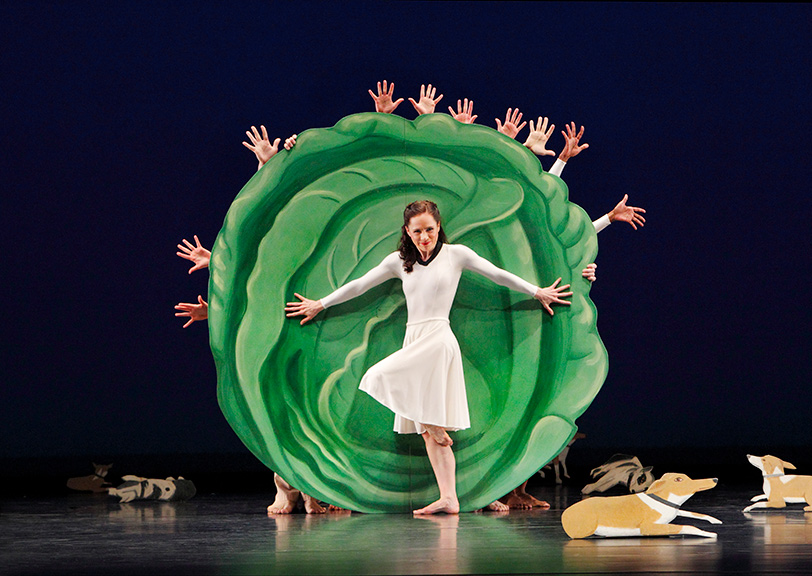ENTER YOUR EMAIL TO RECEIVE OUR WEEKLY NEWSLETTER
Reviewing the 63rd Annual New York Film Festival
The 63rd annual event dazzled with A-list stars, but our critic found hidden gems among the foreign films
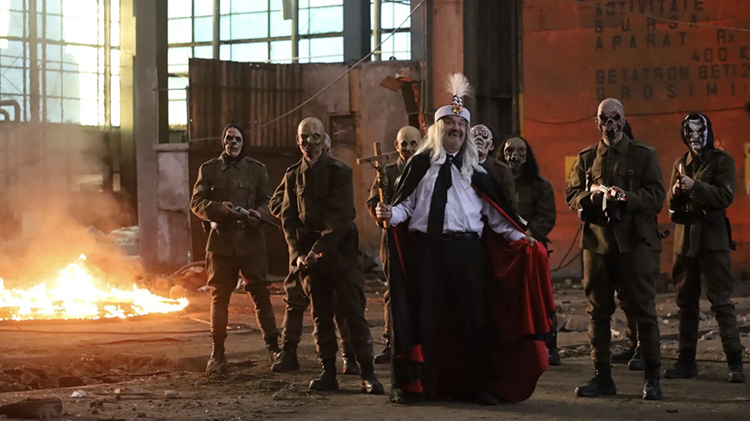
Transylvanian hijinks are on display in Radu Jude’s Dracula.
October 22, 2025
Though the 63rd New York Film Festival featured a lot of films by American directors like Noah Baumbach, Jim Jarmusch, Bradley Cooper and Kathryn Bigelow, you won’t read about them here.
I figured they’d be online or in theaters in the blink of a cinematic eye, so I stuck with the foreign auteur films that used to be the signature of the festival, and which generally last a week or two in the art cinemas—if they find any distributor at all.
Nevertheless, this year’s Festival signaled a change in American cinema. There seems to be more money around for what used to be called independent films. Equipment is cheaper; actors want to be challenged; independent distribution/production companies like A24 have popped up with a nose for niche markets. This year’s Festival was actually kind of glitzy. A-list celebrities like Ben Stiller, Ethan Hawke, George Clooney, Julia Roberts, and Bruce Springsteen paraded the halls of Lincoln Center, smiling and giving interviews. The Upper West Side was beginning to feel a bit like Venice or Cannes.
And I saw some terrific films.
. . . . . . . . . . . . .
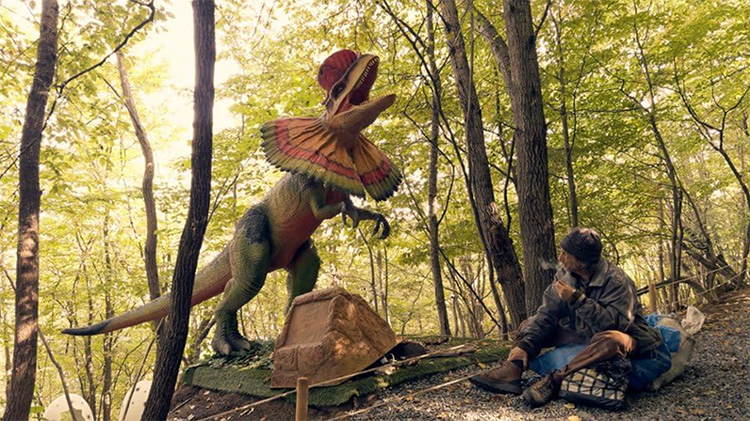
In Radu Jude’s Kontinental ’25, a homeless man consumes his lunch accompanied by mechanical dinosaurs.
Out of Romania—a court officer’s vexations
I couldn’t pass up the two entries—Kontinental ’25 and Dracula—by the Romanian director Radu Jude. I’d watch his grocery list if it were up on the internet—which it probably is.
Mixing narrative with absurdity and a flood of internet images/detritus and TikTok vulgarity, Jude has been the bad boy of a wave of Romanian films that’s been going for two decades. His films aren’t for everyone—they can be shrill and scatological—but they’re always exciting, unpredictable.
In Jude’s best film so far, Don’t Expect Too Much from the End of the World (2023), he merges moral dilemma with frantic hipster imagery in an angry tale about an overworked film production assistant who is assigned to make films that sugarcoat a factory’s liability toward its injured workers. Frustrated by her own hypocrisy, she creates an internet avatar that spews racist, right-wing rhetoric—the exact opposite of her real feelings.
Shot in ten days on two iPhones, Jude’s Kontinental ’25 is more contemplative, less crowded and insistent than his recent films. It has his trademark moments of absurdity, but this time the moral dilemma is more philosophical than political, muted rather than dazzling.
A court officer is charged with removing a squatter from his basement crash pad. Though she’s done everything to extend his stay, she gives him 20 minutes to vacate—during which time he strangles himself. The film centers on the court officer’s guilt and her efforts to come to terms with it. Though she’s not legally responsible, she suffers terribly. In a series of very human vignettes, she reaches out to family, girlfriends, a priest, even an ex-student who offers as comfort a breathless series of Zen koan—his way of dealing with the absurdity of the universe. Jude recognizes that no moral conundrums are isolated, that they’re always contingent on other factors that blur the lines between right and wrong. In the court officer’s case, her Hungarian roots provoke ethnic Romanians to attack her on the internet, while her Hungarian-born mother berates her for not building a career in her “homeland.” Even her sympathetic friends become more involved with the details of the suicide—how did he manage to strangle himself?—than with their friend’s suffering.
Kontinental ’25 (the title refers to a hotel developer’s plan to construct on the site of the building where the homeless man died) is a lovely film, quietly and perfectly rendered. Not one of Jude’s major efforts, but definitely worth seeing.
But then I have to say that his Dracula was too much even for this most dedicated of Jude fans. It’s sort of a camp version—or many, many versions!—of the Dracula legend, with history and sex and blood-sucking and false religion and silly reenactments lumped together in a flood of imagery: Drac in drag, Drac as cartoon, Drac in the form of a washed-up actor playing Dracula running through the streets of a Romanian village. Commercialization of national legend? Cultural appropriation? We get it.
. . . . . . . . . . . . .
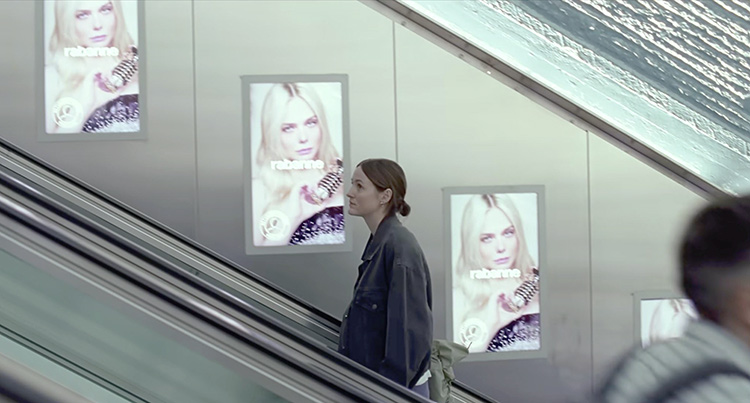
It’s onward and upward with Renate Reinsve’s escalating emotions in Joachim Trier’s Sentimental Value.
A Norwegian family drama, sumptuously shot
I want to love the films of Norwegian director Joachim Trier. In Q&As, he’s intelligent, humble, amiable. His last film, The Worst Person in the World (2021), featured Renate Reinsve, a luminous actress who was the soul of youthful confusion, and who won the Best Actress Award at Cannes.
In this year’s Sentimental Value, Reinsve has a more challenging role as a phobic but brilliant actress whose Swedish father (the always soulful Stellan Skarsgaard) wants her to play the lead in a film that mashes up the story of his suicidal mother with his own fraught relationship with Reinsve and her younger, more conventional sister. In Scandinavia their relationship has unavoidable echoes of Ingmar Bergman’s relationship with his Norwegian writer-daughter, Linn Ullmann, but there are also echoes of Chekhov (whom the Skargaard character says he can read but not watch) and mid–20th century American family dramas like The Magnificent Ambersons (1942) and The Little Foxes (1941).
Sentimental Value is sumptuously, voluptuously shot. The family home outside Oslo couldn’t be more picturesque. The acting is honed to a fine point. By simply tilting his head, Skarsgaard can suggest pathos beneath his character’s solipsism. As the younger sister, Inger Ibsdottir Lilleagas at first seems flat but quietly deepens her character until we recognize what she’s won and lost by opting for a safe life. Reinsve’s performance is pure bravura. An opening sequence where she chews the scenery before a theater performance is both comical and breath-holding, and she’s able to instantly shift moods between suggestions of her father’s self-involvement, her sister’s kindness, and the suicidal impulses of her father’s mother.
And yet, and yet. Why, with all their pulchritude and intelligence, do these characters come off as just a bit boring, so that one ends up with a sense of having seen a film with paint-by-numbers predictability? I think the problem is that every shot, every beat in Sentimental Value feels like it’s been worked out with conscious, considered timing. One longs for danger, accident, spontaneity, surprise. Is Trier perhaps too amiable for his own good?
. . . . . . . . . . . . .
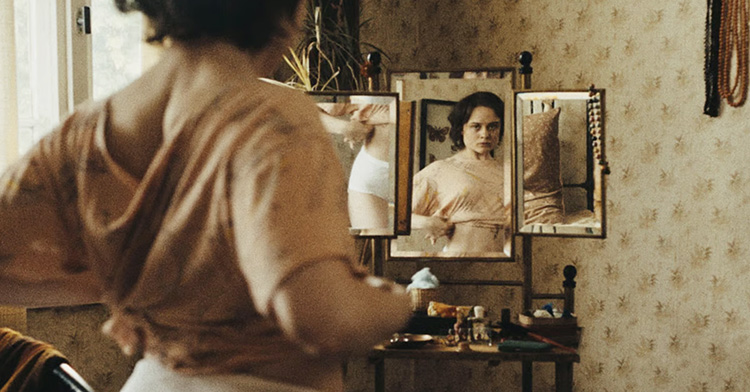
The Sound of Falling is Mascha Schilinski’s take on the social forces behind women’s oppression in Germany.
The landscape of oppression—from a young German director
Mascha Schilinski’s The Sound of Falling isn’t exactly fun to watch. For three difficult hours, it rigorously avoids dramatic moments, has no perceptible story line, and its central “characters” never intersect.
The setting—the one physical element that binds the film together—is a forbidding farm in northeastern Germany. The film focuses on four young women, each from a separate era (pre–World War I, the Hitler period, the Cold War, and the present). All are oppressed in one way or another—sterilized or indentured to fulfill male needs, cruelly used by older relatives, constricted by a canal that separates them from West Germany, baffled and terrified by unspoken lesbian impulses. Throughout all these eras, the atmosphere is joyless, stultifying, full of gestures and family rituals rather than moments of connection. Much of the film is shot with a sepia overtone, and the sequences depicting the earliest generation of farmers have an almost horror-movie chilliness. Schilinski’s refusal to use the usual elements of narrative—character and plot—and her relentlessly dark vision make the film, well, not easy to like.
Yet The Sound of Falling grows on you—or grew on me—for days afterward. What I ended up being impressed by was maybe not the film itself but Schilinski’s way of thinking, her awareness that oppression is rarely a result of tangible villains or decrees, but of social forces and norms that exist obscurely, out of reach, that people go along with without fully, or even partially, being aware of what they’re doing. By paring down her film to sense memories and fleeting impressions, Schilinski creates an atmosphere of helplessness, a paralysis of will that sets in when enemies are invisible. No doubt the film is less a drama than a political screed, but it has power.
Schilinski’s view of social manipulation may have particular relevance to a country still haunted by Hannah Arendt’s “banality of evil.” But our own culture has gotten pretty good at turning its back on injustice and cruelty, too.
. . . . . . . . . . . . .
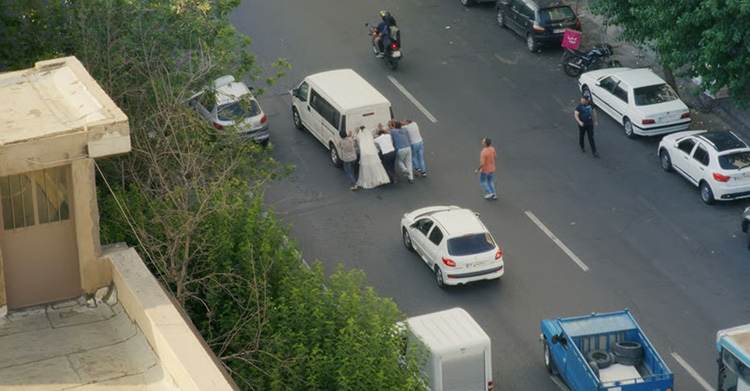
In Jafar Panahi’s It Was Just an Accident, political victims join forces pushing the stalled car they were riding in through Tehran traffic.
Political revenge and slapstick comedy—as only Iranian master Panahi can mix them
And then came It Was Just an Accident, by the Iranian director Jafar Panahi. A film just as political as The Sound of Falling, but tender, funny, moving, angry, fully human.
Panahi’s films are floating around the internet. With a little effort, you can see several of them. Please try to find Taxi (2015), in which Panahi masquerades as a taxi driver and scuttles around Tehran talking to Iranians of all political stripes; Crimson Gold (2005), a strange, moving film about a mentally ill pizza-delivery man; and especially Offside (2003), in which a group of teenage girls disguise themselves to sneak into a men’s soccer game. Panahi is able to do something that only first-rank artists are capable of—create an atmosphere that from the first moments is recognizably his. In Panahi’s case it’s the old humanistic verities—pathos and humor—that reflect his empathy for people, and his seemingly effortless ability to turn that empathy into art.
I think It Was Just an Accident is his best film. When a family car breaks down after a minor accident, Vahid, a worker, recognizes (by the click of his prosthetic leg!) the driver as his torturer in a political lockup. He waylays the man, throws him into a van, and drives out to the desert to bury him alive. A grim, intense moment.
But what follows is pure Panahi: Vahid worries he might have the wrong man. There have been enough clues for us to trust Vahid’s instincts, but the rest of the film is about his doubt, or his compassion disguised as doubt. He fills his van with a group of people who encountered the same torturer. Since they were all blindfolded, each knows the driver through a different sense—one by the smell of his sweat, another by the feel of his scars. Panahi loves to film people riding around Tehran, and he loves closeups in small spaces. The crew of victims, none of whom is absolutely sure he is their man, are as tightly packed together as the Marx Brothers in A Night at the Opera (1935). They shout at one another, pull their hair, and end up talking to their torturer’s daughter on his cell phone, ultimately helping her mother to a hospital as she’s giving birth.
Somehow all this works. How can you switch gears in a film about political revenge to a slapstick comedy in which cops take bribes with credit cards? Panahi does it.
Then this film switches again. The two main protagonists—Vahid and a wedding photographer whose clients have been along for the ride—drive to a spot overlooking Tehran, tie their torturer to a tree, and vent their rage. It is a remarkable scene. The camera is up close and fixed. We see only the blindfolded face of the torturer and partial views of the two people he interrogated, who are now interrogating him. All their pent-up emotions pour out—even the different shades of guilt that the torturer finally allows himself to feel.
How did Panahi manage to make It Was Just an Accident with a repressive regime watching over his shoulder? How is it possible that the Iranian government didn’t throw him and his actors in jail (where he has served time before), and even allowed him to travel to the United States to promote the film? One is reminded of Russian regimes in the past—czarist and Communist—that sent dissenters to the gulag, but then allowed them to write classic novels about their experiences.
What a miracle that we have this film!
. . . . . . . . . . . . .
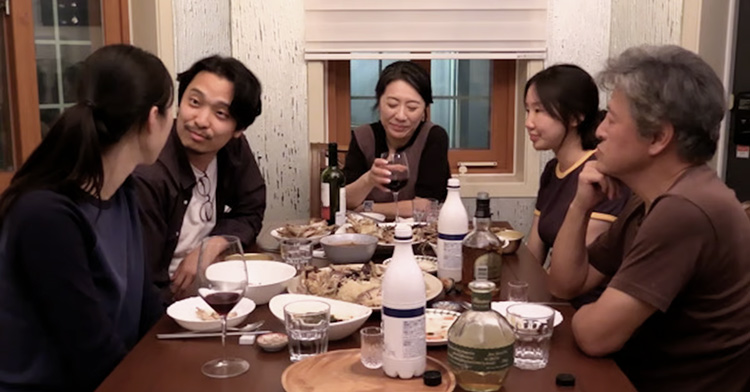
In Hong Sang-soo’s What Does That Nature Say to You, a Korean family dinner goes terribly wrong when the fiancé of one of the daughters recites his poetry to the assembled group.
Rohmeresque vignettes out of Korea
Until now, the Korean director Hong Sang-soo has seemed to me the epitome of the contemporary auteur. Born in Korea but educated in California; well read—and not shy about showing it off; making meta films about filmmakers making films (Right Then, Wrong Now, 2015; In Water, 2023), he has produced work that comes off as a little arch and slick, as if he hadn’t quite arrived at the core of the stories he was trying to tell.
With Hong’s What Does That Nature Say to You I take it all back. The film is exquisitely structured, full of intelligent characters and believable dialogue—a wise film with echoes of Eric Rohmer, but more like a poem by the Chinese poet Tu Fu, whose singular talent was in presenting a series of finely observed moments and tying those moments together in a way that revealed the poem’s intent.
The situation of What Does That Nature Say to You couldn’t be simpler. A young woman from a prosperous family brings her boyfriend home for the first time. The young man is sensitive, full of himself, a would-be poet who, as the son of a self-made public figure, is trying, not very successfully, to make it on his own. Hong structures the film as a series of conversations. He puts different groups of the principal characters in front of a camera and lets them talk through conversations that last 15 to 20 minutes. We see the fiancé talking with his girlfriend’s father, the young couple sitting with her sister in a restaurant, a dinner with the family in which the boyfriend drinks too much and recites a very bad poem, a worried conversation between the young woman’s parents about their daughter’s choice.
Perhaps because Hong has ventured out of his comfort zone, he works harder here than in his previous films. Each of the scenes feels so real, so familiar, that it’s hard to believe they were scripted. Though each vignette is physically stationary, by the end we feel that it has advanced the plot, added depth and complexity. Gradually we come to realize that what started out as an apparently trivial encounter can have profound consequences for all the characters.
I hesitate to give away the gentle kicker to this film, the Tu Fu summation—the one-line last scene that tells us all we need to know about the future of this family. But it is there, and it works.
In this terrible time of political carnage, where liberal democracy seems to be giving way to autocracy all over the world, it was particularly heartening to see these six films—thoughtful, innovative, well-crafted. Most of all, complex. Just like human beings.
All may not be lost.
George Blecher writes for The New York Times and for a number of European publications about American politics and culture. See georgeblecher.com
Continue reading George Blecher on NYCitywoman.com:
Edible Memories: At Le Café Arnold, Chicken Flambé and V8 juice


